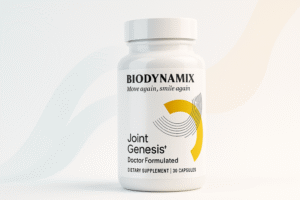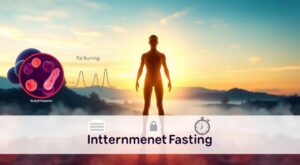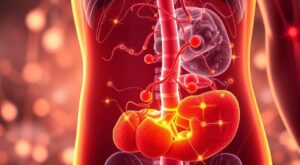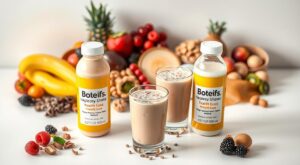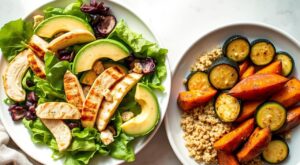Ever thought a low sodium diet could change your health? Starting a low sodium whole food diet is a great way to boost your health and enjoy tasty meals. By choosing fresh, unprocessed foods, you cut down on sodium and improve heart health.
This guide will help beginners with healthy eating. You’ll see that making small, lasting changes is easy. Discover how a healthier diet can greatly improve your health.
What Is a Low Sodium Whole Food Diet?
A low sodium whole food diet focuses on eating foods as close to their natural state as possible. It emphasizes unprocessed foods, making it easy to add low sodium options to your meals. This way, you can enjoy fresh fruits, vegetables, whole grains, and lean proteins without processed foods that often have hidden sodium.
Understanding Whole Foods
Whole foods haven’t been refined or processed, keeping most of their natural nutrients. They include fresh fruits and vegetables, nuts, seeds, and whole grains. Eating whole foods supports your health and provides essential vitamins and minerals.
The Importance of Low Sodium
Lowering sodium intake is key for healthy blood pressure. High sodium can lead to hypertension and heart disease risks. A low sodium diet avoids processed foods, which are often salty. Choosing low sodium foods is a big step towards better heart health.
Health Benefits of This Diet
Following a low sodium whole food diet brings many health benefits. You might see better blood pressure, weight management, and a lower heart disease risk. This diet encourages healthier eating, improving your life quality. It aligns with well-known eating plans, boosting your overall health.
How to Get Started with Your Low Sodium Whole Food Journey
Starting a low sodium diet is about understanding your current eating habits. By looking at what you eat now, you can find areas to improve. This self-check helps you set goals that are easy to reach and healthy.
Assess Your Current Diet
First, track how much sodium you eat each day. A food diary can show you which foods add too much sodium. Check packaged foods, snacks, and condiments, as they often have hidden sodium. Knowing your usual intake helps you make better choices.
Set Realistic Goals
After understanding your diet, set achievable goals. Aim to eat less than 2400 mg of sodium a day, which is good for blood pressure. Eat more whole foods and plan meals ahead. Avoiding processed foods leads to better choices. These steps help you stay on track with your healthy eating plan.

Essential Foods to Include in Your Diet
Starting a low sodium whole food diet is exciting. It opens up a world of tasty and healthy foods. Focus on fresh fruits and veggies, whole grains, and lean proteins. These foods are packed with nutrients and keep sodium levels low, helping you stay healthy.
Fresh Fruits and Vegetables
Fresh fruits and veggies are full of vitamins, minerals, and antioxidants. Pick a variety of colors to get the most health benefits. Here are some great choices:
- Spinach
- Broccoli
- Blueberries
- Apples
- Carrots
Whole Grains
Whole grains are key in a low sodium diet. They’re high in fiber and nutrients. Try adding these to your meals:
- Quinoa
- Brown rice
- Oats
- Whole wheat bread
Lean Proteins
Choose lean proteins instead of fatty meats. They help build muscle and keep you full. Here are some good options:
- Skinless poultry
- Fish
- Beans
- Legumes
Adding these foods to your diet will make your meals better and improve your health.

| Food Group | Examples | Benefits |
|---|---|---|
| Fruits & Vegetables | Spinach, Apples, Blueberries | Rich in vitamins and antioxidants |
| Whole Grains | Quinoa, Brown Rice, Oats | High in fiber and nutrients |
| Lean Proteins | Skinless Poultry, Fish, Beans | Supports muscle health and satisfies hunger |
Foods to Avoid on a Low Sodium Whole Food Diet
When you follow a low sodium whole food diet, it’s important to avoid certain foods. Processed foods are often high in sodium. They can make it hard to keep your sodium intake low. Knowing which foods are high in sodium and finding healthier options can help you make tasty low sodium dishes.
Processed Foods
Processed foods are known for their high sodium levels. Examples include canned goods, frozen meals, and instant pastas. To make low sodium recipes, it’s best to use fresh ingredients. For example, making your own soup with fresh veggies and herbs is better than canned soup.
This not only reduces sodium but also makes your meals more flavorful. For more information on what to avoid, check out this guide on low sodium diets.
High-Sodium Condiments
Condiments can add a lot of sodium without you noticing. Soy sauce, ketchup, and some salad dressings are high in salt. Making your own sauces or dressings is a better choice. This way, you can add flavor without too much sodium.
Whether you’re dressing a salad or marinating meat, homemade condiments let you control the sodium. This also encourages you to try new low sodium recipes.
Snack Foods
Salty snacks like chips, pretzels, and nuts may taste good but are high in sodium. Instead, try fresh fruit, raw veggies, or unsalted nuts for snacks. Making your own snacks is healthier and more fulfilling.
You can make low sodium versions of trail mixes, baked goods, or energy bars. This way, you can stick to your diet while enjoying tasty treats.
By choosing the right foods to avoid, you can lead a healthier life. Cooking from scratch lets you create delicious low sodium dishes. This supports your health goals.
How to Read Food Labels Effectively
Understanding food labels is key for those on a low sodium diet. By knowing what’s on the packaging, you can choose wisely. Look for sodium content and serving sizes to manage your intake.
Identifying Sodium Content
When you check food labels, focus on the sodium content. Foods with less than 140 mg per serving are low in sodium. Remember, the serving size matters a lot. This helps you stay on track with your low sodium diet.
Recognizing Hidden Sources of Sodium
Sodium can hide in foods you least expect. Breads, sauces, and seasonings often have extra sodium. Look for “low sodium” or “no salt added” labels. But always check the nutrition facts to be sure. This way, you can make choices that fit your low sodium diet.
| Food Item | Sodium Content (mg) | Servings to Watch |
|---|---|---|
| Bread | 200 | 1 slice |
| Canned Soup | 800 | 1 cup |
| Soy Sauce | 1,000 | 1 tablespoon |
| Pickles | 400 | 1 medium |
| Salsa | 400 | 1/4 cup |

Meal Prep Tips for Beginners
Efficient meal prep is key for a beginner low sodium meal plan. It helps you stick to your diet goals. This way, you can enjoy cooking more and avoid unhealthy snacks when you’re busy.
Planning Your Meals
Start by making a meal plan for the week. Include a variety of whole foods to keep your meals interesting and healthy. List out your daily meals and snacks, making sure they’re low in sodium. Planning ahead helps you avoid unhealthy choices.
Batch Cooking Strategies
Batch cooking is a game-changer. Cook big batches of grains, proteins, and veggies at once. Then, portion them out into containers for easy meals all week. This saves time and makes cooking simpler. Using glass containers keeps your meals fresh, fitting your low sodium plan perfectly.

Sample Low Sodium Whole Food Meal Plan
Starting your journey with low sodium recipes can be tasty and rewarding. A good meal plan balances taste and health. It’s all about finding nutritious foods that fit your lifestyle and keep sodium levels down.
Breakfast Ideas
- Overnight oats made with unsweetened almond milk, topped with fresh berries and a sprinkle of cinnamon.
- Scrambled eggs with spinach and tomatoes, served with a slice of whole-grain toast.
- Chia pudding mixed with coconut milk, garnished with mango and shredded coconut.
Lunch Options
- A vibrant quinoa salad with chopped cucumbers, bell peppers, and a tangy lemon dressing.
- Whole grain wrap filled with sliced turkey, avocado, and an array of colorful vegetables.
- Vegetable soup made from a base of homemade stock, loaded with greens and beans.
Dinner Selections
- Baked salmon with a side of sautéed broccoli and sweet potatoes.
- Stir-fried tofu with mixed vegetables, served over brown rice.
- Roasted chicken with herbs, served alongside a medley of roasted carrots and zucchini.
For snacks, try fresh fruit, raw nuts, or homemade hummus. These snacks keep your energy up. Adding these low sodium recipes to your daily meals makes healthy eating fun and easy to stick to.
Creative Seasoning Ideas that are Low Sodium
Adding flavor to your meals without salt is easy with herbs and spices. Using low sodium foods in cooking opens up a world of tastes. Fresh herbs like basil, cilantro, and dill add brightness to salads. Dried herbs like oregano and thyme give roasted veggies a deep flavor.
Herbs and Spices Beside Salt
Adding herbs and spices to your cooking is a great way to make bold flavors without sodium. Some favorites include:
- Garlic powder
- Paprika
- Oregano
- Basil
- Black pepper
- Cayenne pepper
Try mixing different herbs for a unique taste. This can help you find new flavors and keep your dishes healthy.
Homemade Sauces and Dressings
Making your own sauces and dressings is another way to enhance your meals. This lets you choose what goes in, avoiding sodium in store-bought options:
| Homemade Sauce/Dressing | Main Ingredients |
|---|---|
| Vinaigrette | Olive oil, vinegar, mustard, herbs |
| Garlic Aioli | Greek yogurt, garlic, lemon juice, herbs |
| Tomato Sauce | Fresh tomatoes, basil, oregano, garlic |
| Nut-Based Sauce | Cashews, nutritional yeast, garlic, lemon juice |
These sauces are great with salads, pasta, and grilled meats. They help you stick to your low sodium diet while enjoying tasty meals.
Staying Motivated on Your Diet Journey
Starting your low sodium whole food diet can change your life. It’s important to stay motivated to succeed. Setting goals and finding a supportive group can help a lot.
Setting Milestones
Setting clear goals helps you see how far you’ve come. You might track your sodium intake or aim to lose weight. Every small win boosts your motivation and shows you’re on the right track.
Celebrate these victories to keep your spirits up. It makes your diet journey more enjoyable.
Joining Support Groups
Finding people with similar goals can be very encouraging. Look for online groups or local meetups focused on healthy eating. Sharing tips and stories creates a sense of community.
This makes it easier to face challenges and stay committed. Remember, you’re not alone on this journey.
Monitoring Your Progress and Adjusting Your Plan
Starting a low sodium whole food diet is a journey that needs careful attention. It’s important to watch your habits and goals closely. Keeping a food journal can help you track your progress and make needed changes.
Keeping a Food Journal
Writing down what you eat helps you see if you’re meeting your low sodium goals. A food journal shows you where sodium comes from in your meals. It helps you find ways to improve your diet.
Reassessing Your Goals
It’s key to check your goals often as you follow a low sodium diet. You might start with specific goals like cutting down on sodium or eating more whole foods. As you get used to these changes, you can set new goals or challenges. This keeps you motivated and helps you stick to a healthy lifestyle.



